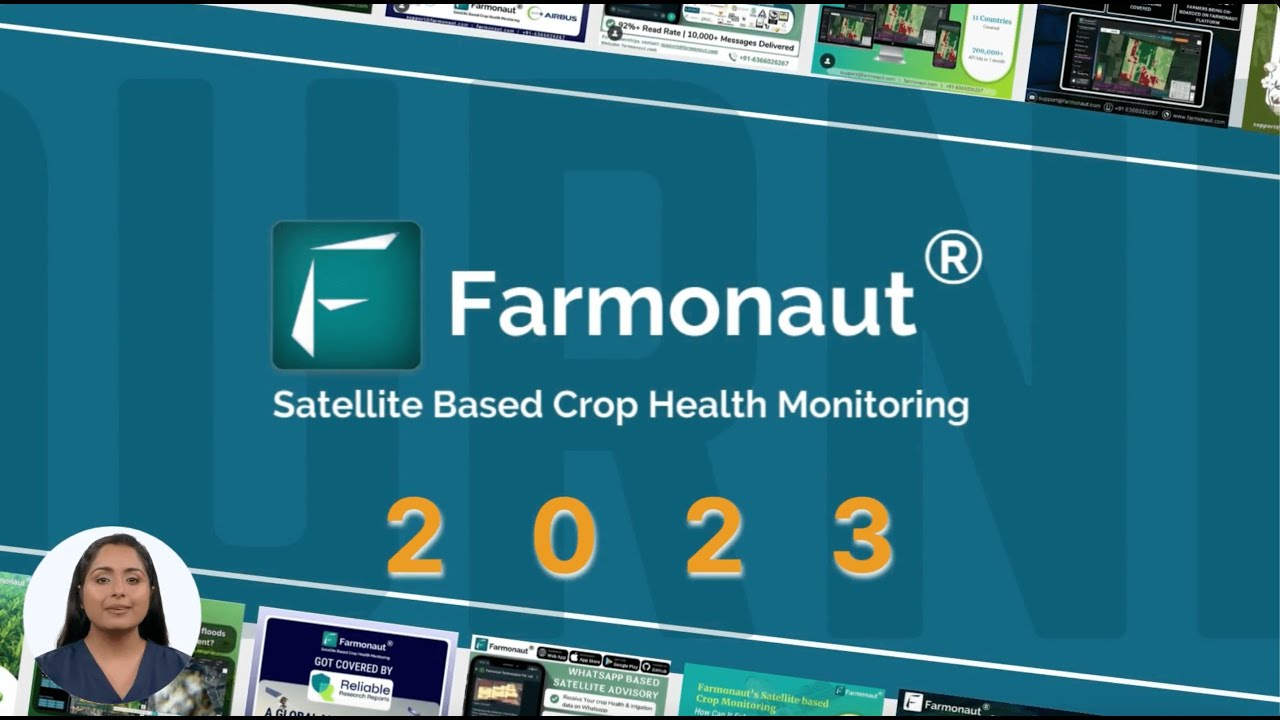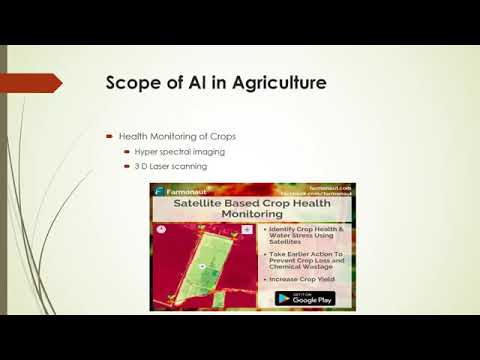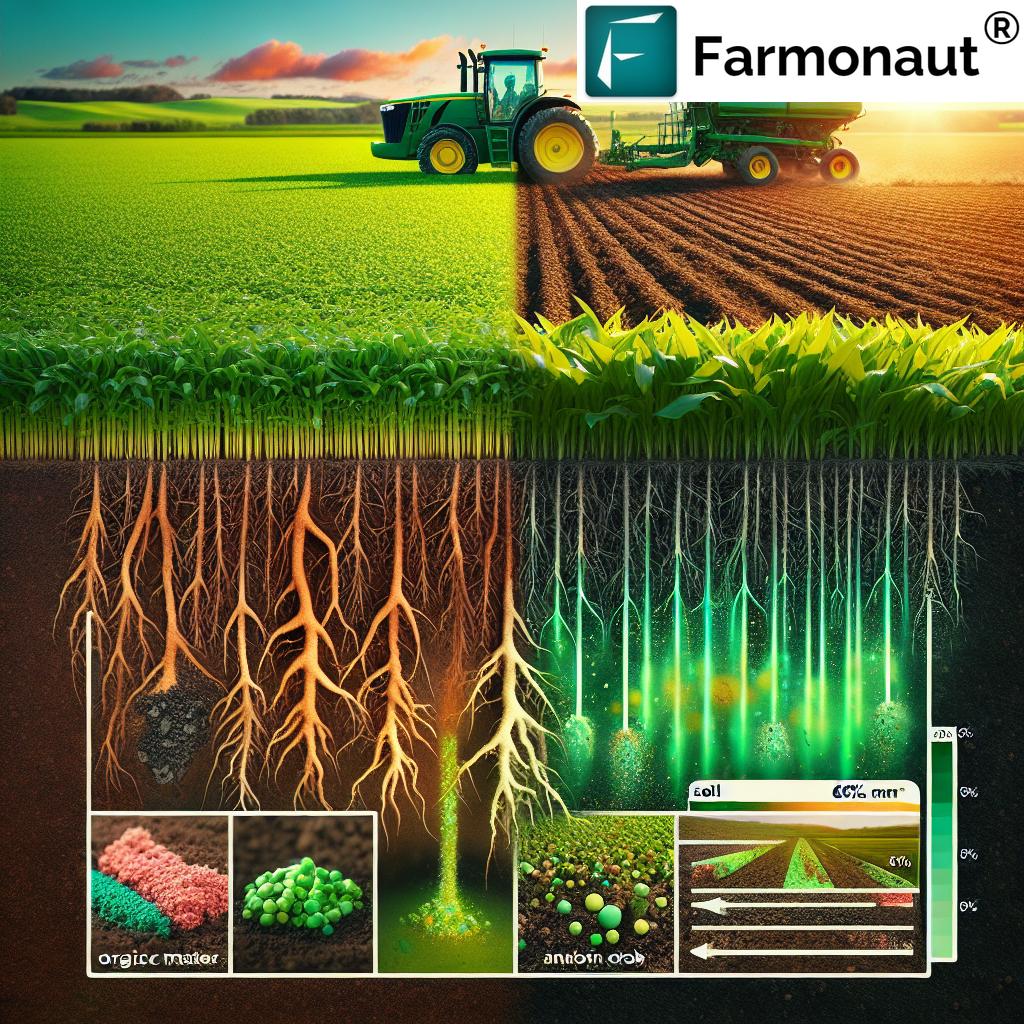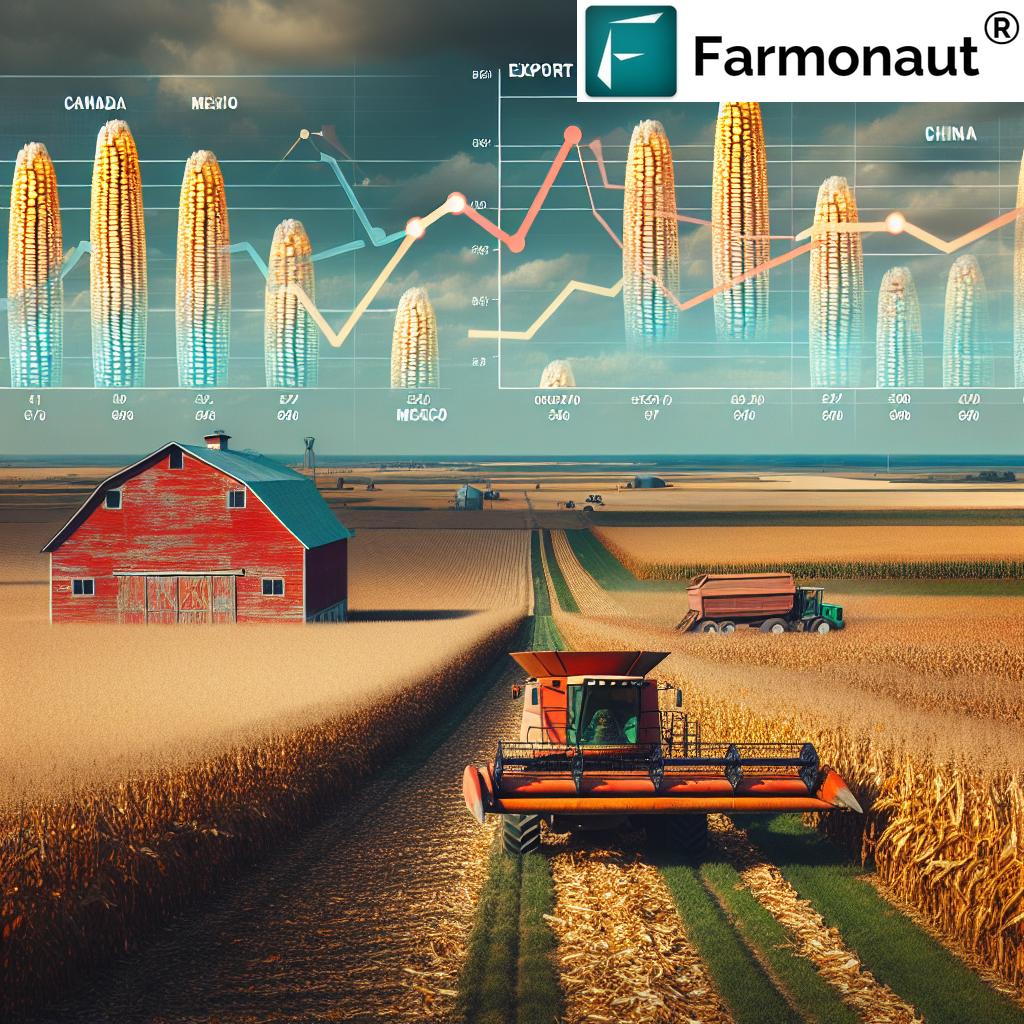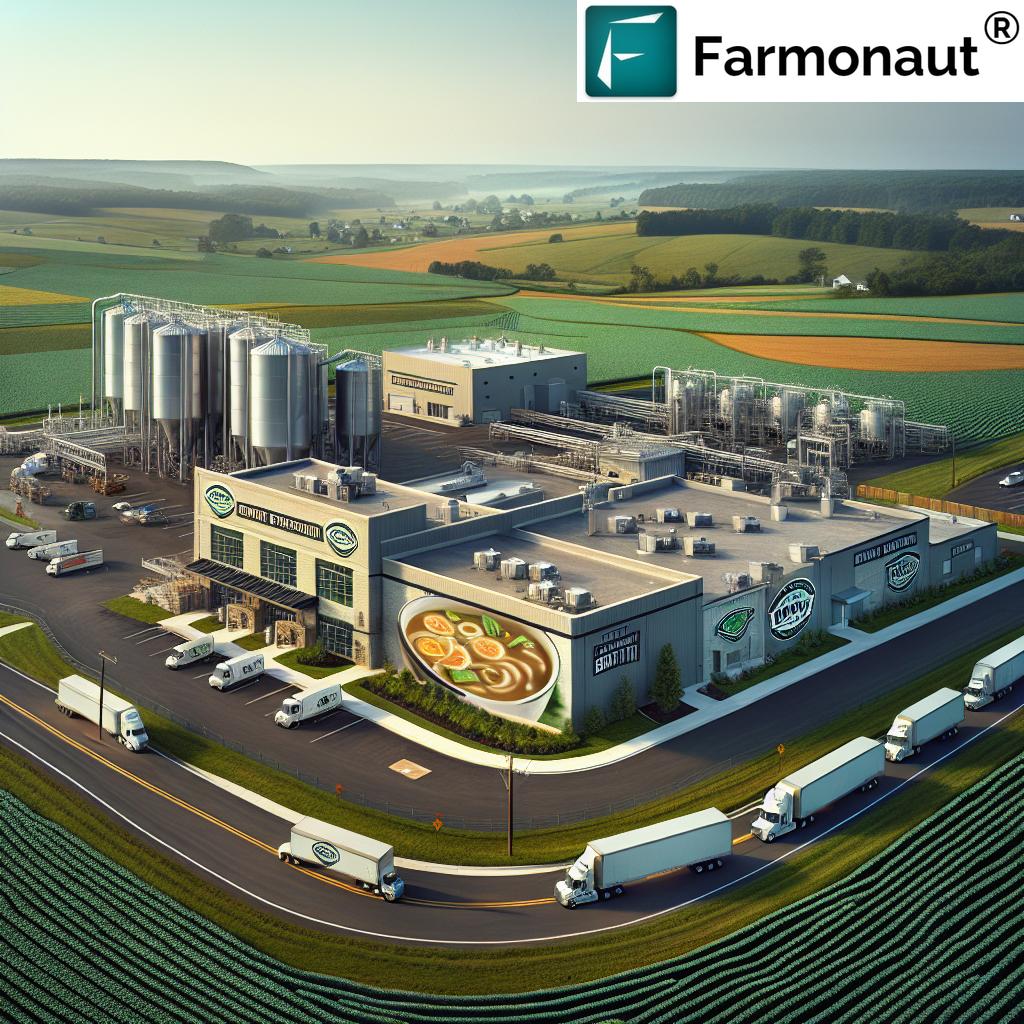Revolutionizing Agriculture in the Americas: Innovative Partnerships Boost Food Security and Rural Growth by 2025
“By 2025, this partnership aims to boost food security and rural growth across the Americas through innovative agricultural solutions.”
In a groundbreaking development for agricultural innovation in the Americas, we are witnessing a transformative era that promises to reshape the landscape of farming and food security across the region. As we approach 2025, the focus on sustainable farming solutions and food security research has never been more critical. The confluence of cutting-edge science, technology, and international collaboration is setting the stage for a revolution in how we approach agriculture, particularly in the realms of climate-resilient agriculture, family farming support, and agrifood digitalization trends.
At the heart of this transformation is a strategic partnership that brings together two powerhouses in agricultural research and innovation. This collaboration is not just about joining forces; it’s about catalyzing a movement that will drive agricultural technology advancements, optimize supply chains, and expand market opportunities for farmers throughout the Americas. By leveraging innovation and bioeconomy, this initiative addresses global challenges in food systems and resource management head-on.
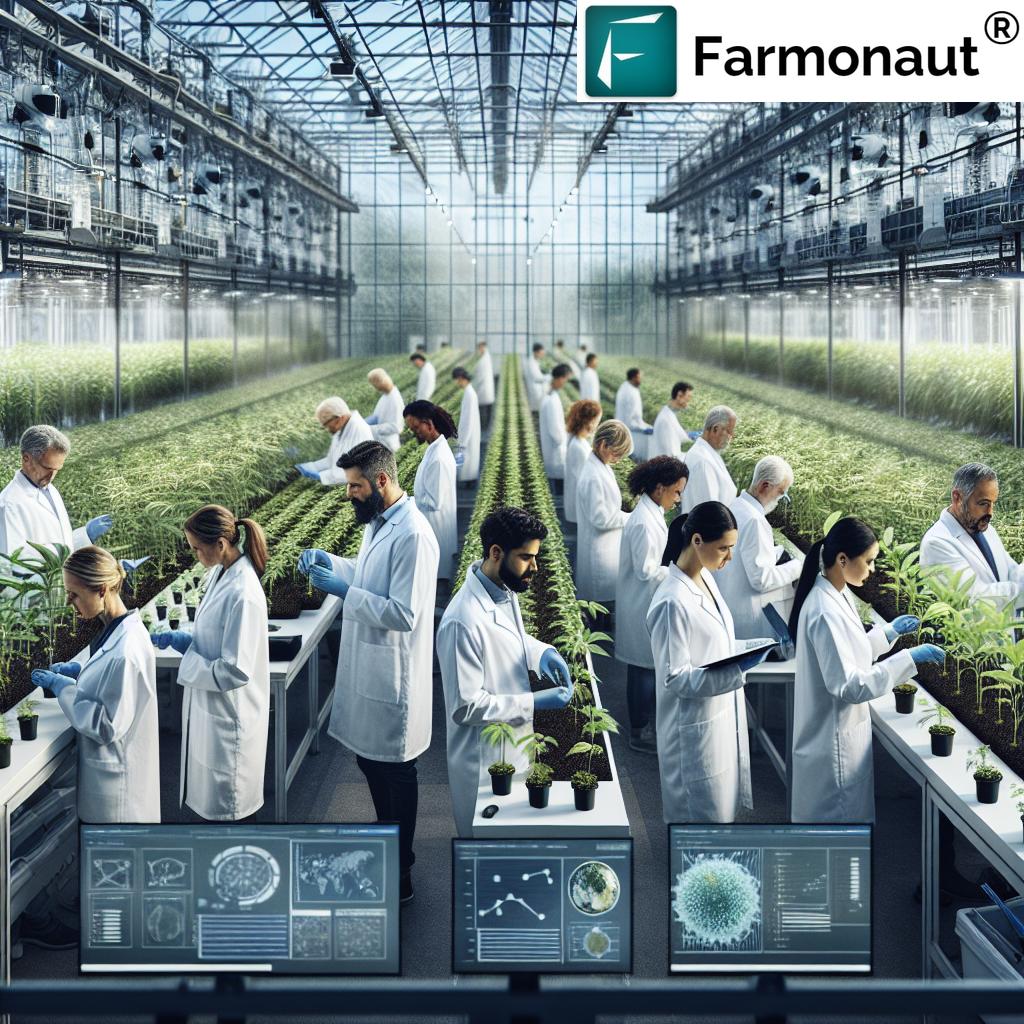
The Dawn of a New Era in Agricultural Innovation
As we delve into the intricacies of this partnership, it’s crucial to understand the context in which it emerges. The global demand for transforming food systems has reached a fever pitch, driven by the pressing need to feed a growing population while combating climate change and preserving natural resources. This collaboration sets a new standard for turning scientific research into scalable solutions, promising to strengthen agricultural resilience, enhance trade and regional integration, and promote knowledge exchange across borders.
Key areas of focus include:
- Climate-Resilient Agriculture: Developing crops and farming techniques that can withstand extreme weather conditions and changing climate patterns.
- Family Farming Support: Empowering small-scale farmers with technology and resources to increase productivity and market access.
- Agrifood Digitalization: Implementing digital solutions to streamline agricultural processes, from farm management to supply chain logistics.
- Bioeconomy Advancements: Harnessing biological resources sustainably to create new products and economic opportunities in rural areas.
This initiative is not just about technological advancement; it’s about creating a resilient and sustainable agricultural ecosystem that can withstand global challenges while promoting economic growth in rural areas.
Leveraging Technology for Agricultural Transformation
In the quest for agricultural innovation, technology plays a pivotal role. Companies like Farmonaut are at the forefront of this revolution, offering advanced satellite-based farm management solutions that are accessible via mobile apps and web interfaces. These technologies enable real-time crop health monitoring, providing farmers with crucial data to make informed decisions about irrigation, fertilizer usage, and pest management.
The integration of artificial intelligence and machine learning in agriculture is another game-changer. AI-driven advisory systems can analyze vast amounts of data to provide personalized recommendations to farmers, helping them optimize their practices and increase yields. This level of precision in farming was once the domain of large agricultural corporations but is now becoming increasingly accessible to farmers of all scales.
Blockchain technology is also making waves in the agricultural sector, particularly in the realm of product traceability. By ensuring transparency and security in supply chains, blockchain solutions are building trust between producers and consumers while reducing fraud. This technology is particularly crucial for product traceability, allowing consumers to trace the journey of their food from farm to table, thereby promoting food safety and ethical sourcing practices.
Empowering Farmers Through Digital Solutions
One of the most significant impacts of this agricultural revolution is the empowerment of farmers through digital solutions. By providing access to real-time data and expert advice, these technologies are leveling the playing field for small and medium-sized farms. Farmers can now make data-driven decisions about crop management, leading to increased productivity and reduced resource wastage.
“The collaboration focuses on 3 key areas: climate-resilient agriculture, family farming support, and agrifood digitalization trends.”
For instance, crop plantation and forest advisory services provided by platforms like Farmonaut offer tailored recommendations based on satellite imagery and AI analysis. This level of precision in agriculture was previously unattainable for many farmers but is now becoming a reality, thanks to the democratization of technology.
Moreover, digital platforms are opening up new market opportunities for farmers. By connecting producers directly with buyers and providing real-time market information, these solutions are helping farmers get better prices for their produce and reduce dependency on intermediaries.
Advancing Climate-Resilient Agriculture
As climate change continues to pose significant challenges to agriculture, the development of climate-resilient farming practices has become paramount. This partnership is focused on creating innovative solutions that can help farmers adapt to changing weather patterns and mitigate the impacts of extreme climate events.
Some key initiatives in this area include:
- Development of drought-resistant crop varieties
- Implementation of water-efficient irrigation systems
- Promotion of agroforestry and other sustainable land management practices
- Use of satellite technology for early warning systems and crop monitoring
These efforts are crucial not only for ensuring food security but also for preserving biodiversity and reducing the environmental footprint of agriculture. By adopting climate-smart practices, farmers can increase their resilience to climate shocks while contributing to global efforts to combat climate change.

Supporting Family Farming and Rural Development
Family farming plays a crucial role in the agricultural landscape of the Americas, contributing significantly to food security and rural employment. This partnership recognizes the importance of supporting small-scale farmers and has developed targeted initiatives to enhance their productivity and market access.
Key aspects of family farming support include:
- Provision of training and technical assistance
- Facilitation of access to credit and insurance
- Promotion of cooperative models and collective marketing
- Integration of digital technologies in small-scale farming operations
By empowering family farmers with the tools and knowledge they need to thrive, this initiative is not only boosting agricultural productivity but also contributing to rural economic growth and social development.
Embracing Agrifood Digitalization
The digitalization of the agrifood sector is revolutionizing every aspect of the agricultural value chain, from production to distribution. This partnership is at the forefront of promoting and implementing digital solutions that can enhance efficiency, reduce waste, and improve decision-making in agriculture.
Some key areas of agrifood digitalization include:
- Precision agriculture technologies
- Digital marketplaces for agricultural products
- Blockchain-based supply chain management
- IoT sensors for real-time monitoring of crops and livestock
These digital innovations are not only improving productivity but also enhancing transparency and traceability in the food system. For instance, fleet management solutions are optimizing logistics in agriculture, reducing costs and improving efficiency in the transportation of agricultural products.
Harnessing the Power of Bioeconomy
The bioeconomy represents a new frontier in agricultural innovation, offering opportunities to create value-added products from biological resources while promoting sustainability. This partnership is exploring various avenues to harness the potential of bioeconomy in agriculture, including:
- Development of biofuels and bioenergy
- Creation of bio-based materials and chemicals
- Valorization of agricultural waste and by-products
- Promotion of circular economy principles in agriculture
By fostering innovation in the bioeconomy, this initiative is not only creating new economic opportunities for farmers and rural communities but also contributing to the transition towards a more sustainable and resource-efficient agricultural sector.
Enhancing Trade and Regional Integration
A key objective of this partnership is to strengthen trade and regional integration in the agricultural sector across the Americas. By promoting knowledge exchange, harmonizing standards, and facilitating market access, this initiative aims to create a more integrated and resilient agricultural market in the region.
Efforts in this area include:
- Development of common quality standards for agricultural products
- Facilitation of cross-border trade through digital platforms
- Promotion of regional value chains in agriculture
- Capacity building for compliance with international trade regulations
These initiatives are crucial for expanding market opportunities for farmers and agribusinesses across the Americas, contributing to economic growth and food security in the region.
The Role of Artificial Intelligence in Agriculture
Artificial Intelligence (AI) is playing an increasingly important role in shaping the future of agriculture. From predictive analytics for crop yields to automated pest detection, AI is revolutionizing how we approach farming and resource management.
Some key applications of AI in agriculture include:
- Precision farming and targeted resource application
- Automated irrigation systems based on real-time soil moisture data
- Early detection of crop diseases and pests
- Predictive analytics for market demand and pricing
By leveraging AI technologies, farmers can make more informed decisions, optimize their resource use, and increase their overall productivity. This not only benefits individual farmers but also contributes to the broader goals of food security and sustainable agriculture.
Promoting Sustainable Agriculture Practices
Sustainability is at the core of this agricultural revolution. The partnership is committed to promoting farming practices that are not only productive but also environmentally responsible. This includes efforts to reduce the carbon footprint of agriculture, conserve water resources, and protect biodiversity.
Key initiatives in sustainable agriculture include:
- Promotion of organic farming methods
- Implementation of conservation agriculture techniques
- Development of integrated pest management strategies
- Encouragement of crop rotation and diversification
These sustainable practices are crucial for ensuring the long-term viability of agriculture in the face of environmental challenges. Moreover, they align with growing consumer demand for environmentally friendly and ethically produced food products.
For instance, carbon footprinting tools are helping farmers and agribusinesses measure and reduce their environmental impact, contributing to global efforts to combat climate change.
Improving Access to Agricultural Finance
Access to finance remains a significant challenge for many farmers, particularly small-scale and family farmers. This partnership is working to address this issue by developing innovative financial solutions tailored to the needs of the agricultural sector.
Key initiatives in agricultural finance include:
- Development of digital banking solutions for rural areas
- Creation of risk assessment tools based on satellite data and AI
- Promotion of microfinance and group lending models
- Implementation of blockchain-based lending platforms
By improving access to finance, this initiative is empowering farmers to invest in their operations, adopt new technologies, and expand their production. This, in turn, contributes to rural economic growth and food security.
For example, crop loan and insurance services are leveraging satellite data to assess crop health and potential yields, enabling financial institutions to make more informed lending decisions and offer better terms to farmers.
The Future of Agriculture in the Americas
As we look towards 2025 and beyond, the future of agriculture in the Americas is bright with promise. The innovative partnerships and technological advancements we’re witnessing today are laying the foundation for a more resilient, productive, and sustainable agricultural sector.
Key trends shaping the future of agriculture include:
- Increased adoption of precision agriculture technologies
- Growing importance of data-driven decision-making in farming
- Expansion of vertical farming and urban agriculture
- Rise of alternative protein sources and plant-based products
- Greater integration of renewable energy in agricultural operations
These trends, coupled with the ongoing efforts to promote innovation and collaboration in the sector, are set to transform agriculture in the Americas, boosting food security, and driving rural economic growth.
Agricultural Innovation Impact Matrix
| Innovation Category | Productivity Increase (%) | Food Security Improvement (1-10) | Rural Economic Growth (%) | Environmental Sustainability (1-10) |
|---|---|---|---|---|
| Climate-Resilient Agriculture | 15 | 8 | 10 | 9 |
| Family Farming Support | 20 | 7 | 15 | 7 |
| Agrifood Digitalization | 25 | 9 | 20 | 8 |
| Bioeconomy Advancements | 18 | 6 | 25 | 10 |
Conclusion
The agricultural revolution unfolding in the Americas is a testament to the power of innovation, collaboration, and technology in addressing global challenges. By focusing on climate-resilient agriculture, supporting family farming, embracing digitalization, and harnessing the potential of bioeconomy, this initiative is not just transforming agriculture – it’s shaping the future of food security and rural development across the region.
As we move towards 2025, the impact of these efforts will become increasingly evident, creating a more resilient, productive, and sustainable agricultural sector that benefits farmers, consumers, and the environment alike. The journey ahead is filled with challenges, but with continued innovation and collaboration, the future of agriculture in the Americas looks brighter than ever.
FAQs
- What are the main goals of this agricultural innovation initiative?
The main goals include enhancing food security, boosting rural economic growth, promoting climate-resilient agriculture, and supporting family farming through technological advancements and international collaboration. - How does climate-resilient agriculture contribute to food security?
Climate-resilient agriculture helps ensure stable food production in the face of changing weather patterns and extreme climate events, thereby contributing to long-term food security. - What role does digitalization play in modern agriculture?
Digitalization in agriculture enables precision farming, improves decision-making through data analysis, enhances supply chain efficiency, and opens up new market opportunities for farmers. - How does this initiative support small-scale and family farmers?
The initiative provides family farmers with access to technology, training, financial services, and market opportunities, helping them increase productivity and income. - What is the significance of bioeconomy in agriculture?
Bioeconomy in agriculture focuses on creating value-added products from biological resources, promoting sustainability, and opening up new economic opportunities in rural areas.
Earn With Farmonaut: Affiliate Program
Earn 20% recurring commission with Farmonaut’s affiliate program by sharing your promo code and helping farmers save 10%. Onboard 10 Elite farmers monthly to earn a minimum of $148,000 annually—start now and grow your income!
Farmonaut Subscriptions
Access Farmonaut’s advanced agricultural solutions:
For developers interested in integrating Farmonaut’s satellite and weather data into their applications, check out our API and API Developer Docs.



